Maui, the “Valley Isle,” is renowned for its stunning beaches, each offering unique experiences for visitors seeking sun, sand, and tropical bliss. From hidden coves with calm waters to dramatic coastlines perfect for surfing,
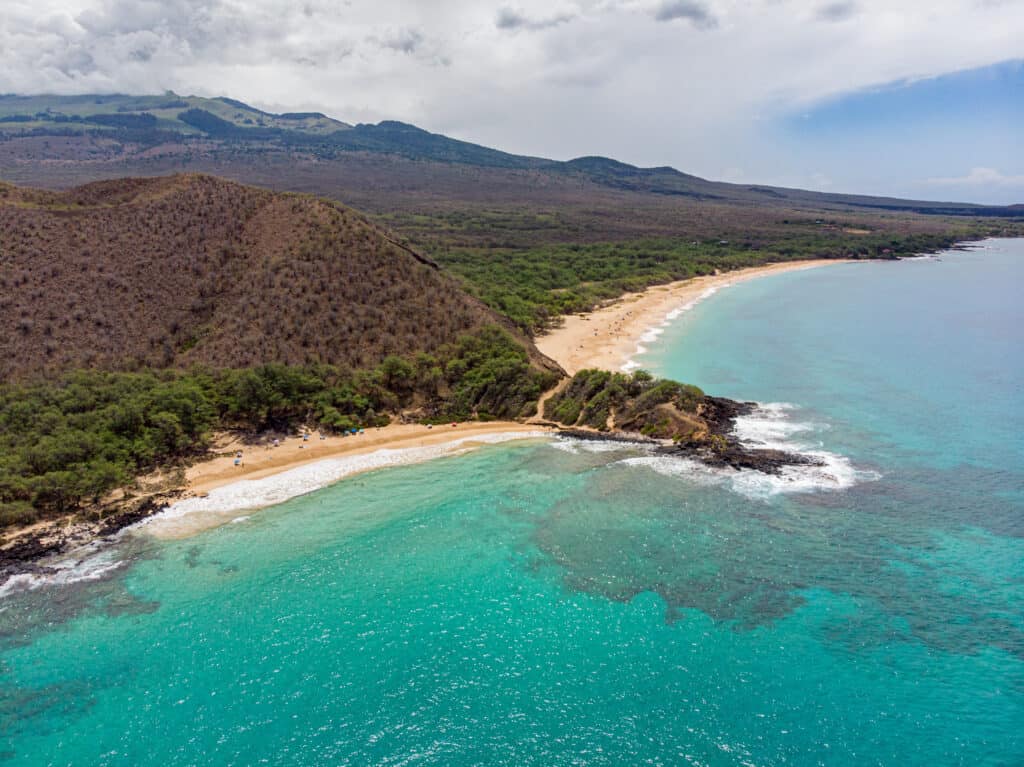
Located on Maui’s south shore, Big Beach, also known as Oneloa Beach, is part of Makena Beach State Park. It’s a stunning stretch of white sand, about 3,300 feet long and 100 feet wide, framed by dramatic black lava rock formations and the iconic Puʻu Olaʻi cinder cone. Big Beach is one of Maui’s signature beaches and remains delightfully undeveloped. Unlike many other beaches, you won’t find hotels, condos, or buildings along its pristine shoreline.
Big Beach is known for its strong currents and waves, which can be dangerous for inexperienced swimmers. While the waves can be strong, there are usually calmer sections suitable for swimming, especially towards the southern end of the beach. Always pay attention to lifeguard warnings and ocean conditions. If you’re an experienced bodyboarder or body surfer, Big Beach is a haven due to the powerful waves.
There are no lifeguards, showers, or restrooms at the beach. Come prepared with everything you need, including sunscreen, water, snacks, and any necessary beach gear. Parking is limited and fills up quickly, especially on weekends and holidays. Arrive early to secure a spot. Help preserve the beauty of Big Beach by packing out all your trash and respecting the natural surroundings.
Mākena Beach State Park is divided into two distinct sections: Big Beach and Little Beach so to get the best of both worlds, combine your visit to Big Beach with exploring the nearby Little Beach which offers a smaller cove perfect for snorkeling!
Black Rock Beach, also known as Pu’u Keka’a in Hawaiian, is a beautiful stretch of sand located at the north end of Kāʻanapali Beach on the west coast of Maui. Black Rock itself is part of the West Maui Mountains, which were once active volcanoes. The lava that flowed from these volcanic vents eventually cooled and solidified, creating the rugged landscape we see today.
In Hawaiian mythology and culture, rocks hold spiritual significance. Black Rock is considered a piko, or a sacred point where energy converges. Ancient Hawaiians believed this site served as a leaping point for the souls of the deceased to enter the spirit world. This belief likely stems from the dramatic drop-off and powerful waves around the rock. King Kahekili, Maui’s last ruling chief (1737-1794), was known for his athleticism and reportedly enjoyed cliff jumping from Pu’u Keka’a. Visitors are encouraged to approach Black Rock with respect and reverence. Don’t miss the sunset cliff diving ceremony, where divers light torches along the cliff before plunging into the ocean.
Today, the outcropping is a popular spot for swimming, sunbathing, snorkeling, and cliff jumping, and offers stunning views of the Pacific Ocean and the neighboring islands of Moloka‘i and Lāna‘i. The Black Rock outcropping provides shelter for various marine life, contributing to the rich underwater ecosystem for snorkeling. It’s considered one of the best snorkeling spots on Maui. The underwater world around the lava rock is teeming with colorful fish, coral reefs, and sea turtles.
The currents around Black Rock can be strong, so be sure to swim only in designated areas and pay attention to lifeguard warnings. If you are considering cliff jumping, only jump if you’re comfortable with the height and the water conditions.
Black Rock Beach is easily accessible by car. From Lāhainā, take the Honoapiilani Highway north towards Kāʻanapali. Turn left onto Kāʻanapali Parkway and follow it to the end. There are two public parking lots available, one near Whalers Village and the other closer to the beach. If you’re staying in Kāʻanapali, you can also walk or bike to the beach.
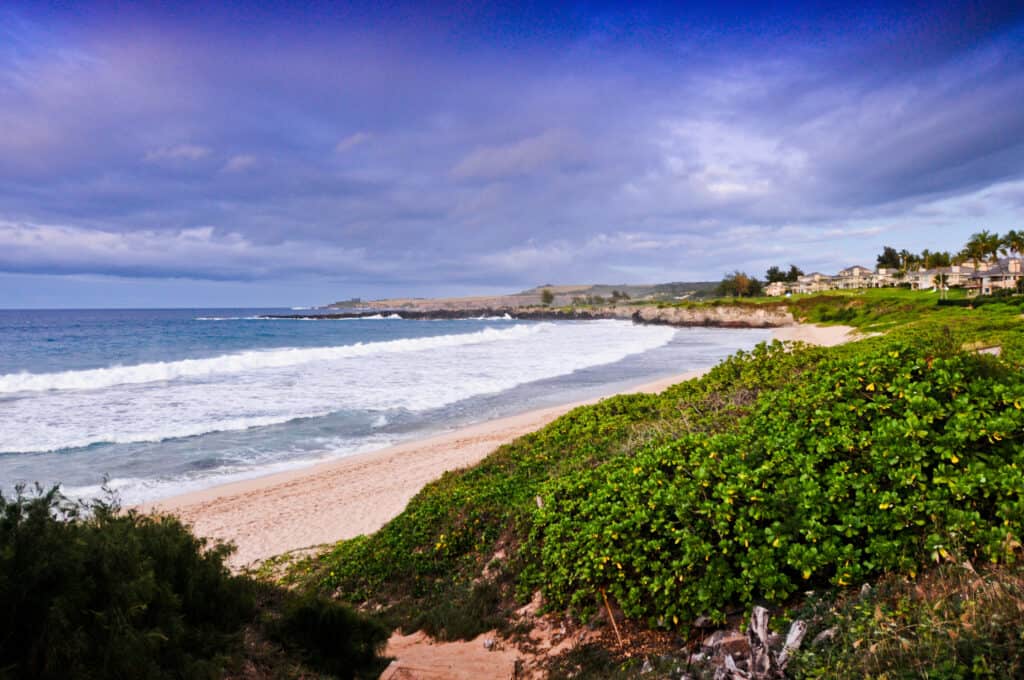
Ironwoods Beach, also known as Oneloa Beach, derives its name from the ironwood trees that grace its shoreline. The beach is a hidden gem nestled on the west coast of Maui, between Kapalua and Napili. Unlike the busier beaches in the area, Ironwoods offers a serene escape with stunning scenery and a relaxed atmosphere.
Due to its somewhat hidden access, Ironwoods Beach remains a well-kept secret. Public parking and beach access are present but not widely known, making it a serene and uncrowded spot. Visitors often appreciate the tranquility and privacy it offers. The beach is bordered on the north by 20-foot lava cliffs, which serve as a natural water hazard for the golf course above. If you choose to relax at the north end of the beach, be mindful of occasional golf balls coming down from above.
While the beach is somewhat shielded from big waves by rocks at the north end, there can still be a swift current outside this protection. Rip currents may also form right off the beach, so swimming and snorkeling require caution.
It is approximately 7.4 miles north of Lāhainā on highway 30 off Lower Honoapi’ilani Highway just north of the Kapalua Bay Hotel Resort and the Kapalua Bay Shops. Due to limited parking, be sure to arrive early, especially during peak season. There are no lifeguards on duty, so swim responsibly and be aware of ocean conditions.
Combine your visit to Ironwoods Beach with exploring the nearby Kapalua Coastal Trail for breathtaking ocean views and diverse flora. Facilities are minimal, so pack everything you need for your beach day, including sunscreen, water, snacks, and any snorkeling gear. If you’re looking for more amenities, head to Kapalua Bay Beach, which offers restaurants, shops, and water sports rentals.
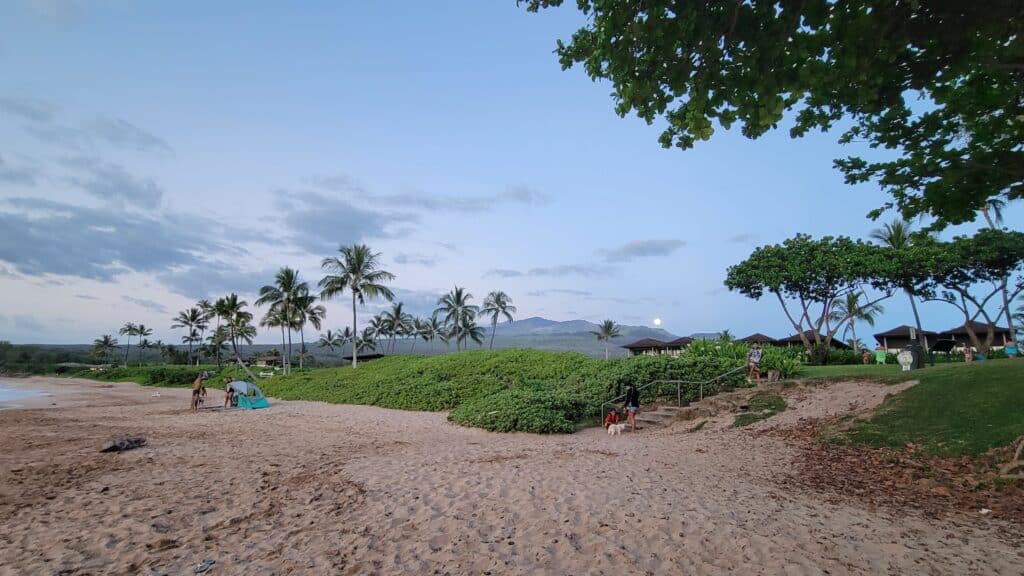
Imagine a sheltered cove with soft sand, calm waves, and lush greenery surrounding the shoreline. That’s the idyllic setting of Maluaka Beach. Maluaka Beach, also known as Turtle Town, is a hidden gem on the south shore of Maui, nestled between Wailea and Makena. With fewer crowds compared to nearby Wailea beaches, it offers a peaceful escape perfect for relaxation and enjoying the natural beauty. The beach is dotted with ironwood trees providing shade, contributing to its serene atmosphere.
Maluaka Beach is renowned for its excellent snorkeling opportunities, earning its nickname “Turtle Town.” The calm waters and shallow reefs near the shore make it ideal for families and snorkeling beginners. Explore the coral reefs teeming with colorful fish, including angelfish, butterflyfish (Lauwiliwili nukunuku ‘oi‘oi) , and even the occasional Hawaiian green sea turtle (Honu).
The calm waters and sandy beach make Maluaka ideal for families with young children. Build sandcastles, play in the shallow waves, or explore the tide pools teeming with interesting creatures. Make sure to pack a lunch and soak up the ocean side views! There are three picnic tables on a grassy area overlooking the beach, providing the best beachside meal you’ll get in Maui.
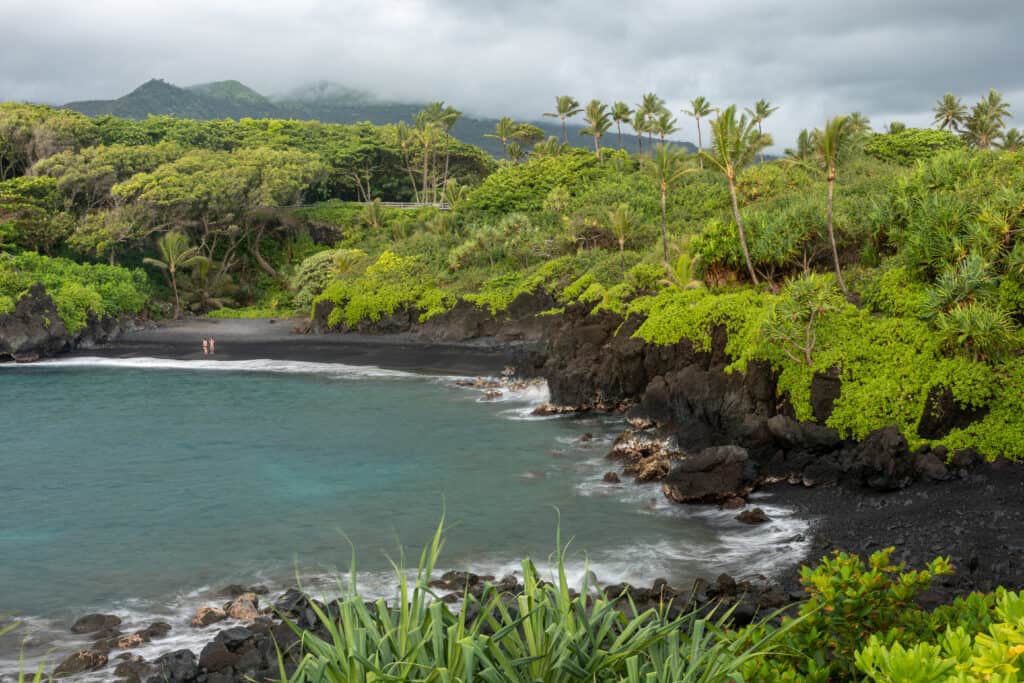
This beach, also known as Pa’iloa Beach or Honokalani Beach, is located on the Road to Hāna and is widely considered the most famous black sand beach on Maui. It boasts stunning black sand formed from eroded lava rock, dramatic sea caves, and blowholes. The park itself is roughly 51 miles (82 km) from Kahului and takes approximately 2.5 hours to reach by car.
To manage crowding and preserve the natural beauty, Waiʻānapanapa State Park now requires reservations for entry. Hawaiʻi residents can still enter for free, but non-residents pay a nominal fee. Reservations can be made online at the Hawaiʻi State Parks website.
The area holds deep cultural significance for the Native Hawaiians. Ancient legends and stories are associated with the park’s features, and several heiau, or ancient Hawaiian temples, are scattered throughout the park. These structures, often made of stacked rocks, served as places of worship, healing, and sacrifice. The most prominent heiau in the park is Pu’u Kukui, located near the blowholes. This heiau was dedicated to Lono, the god of agriculture and fertility. Other heiau like Ka’uiki and Kulohelohe can also be found within the park, each with their own unique history and significance.
According to Hawaiian mythology, the blowholes at the beach were created by Pele, the volcano goddess, as she chased her sister Hi’iaka across the island. The spouting water represents Pele’s fiery breath and anger. The sea caves were believed to be entrances to the spirit world, where souls journeyed after death. Legends tell of kahunas (priests) performing rituals and ceremonies within these sacred caves.
Although traditional practices are no longer actively performed at the heiau, they serve as a powerful reminder of the rich cultural heritage of the Hawaiian people. The park holds educational and spiritual significance for many Native Hawaiians who visit to connect with their ancestors and the land.
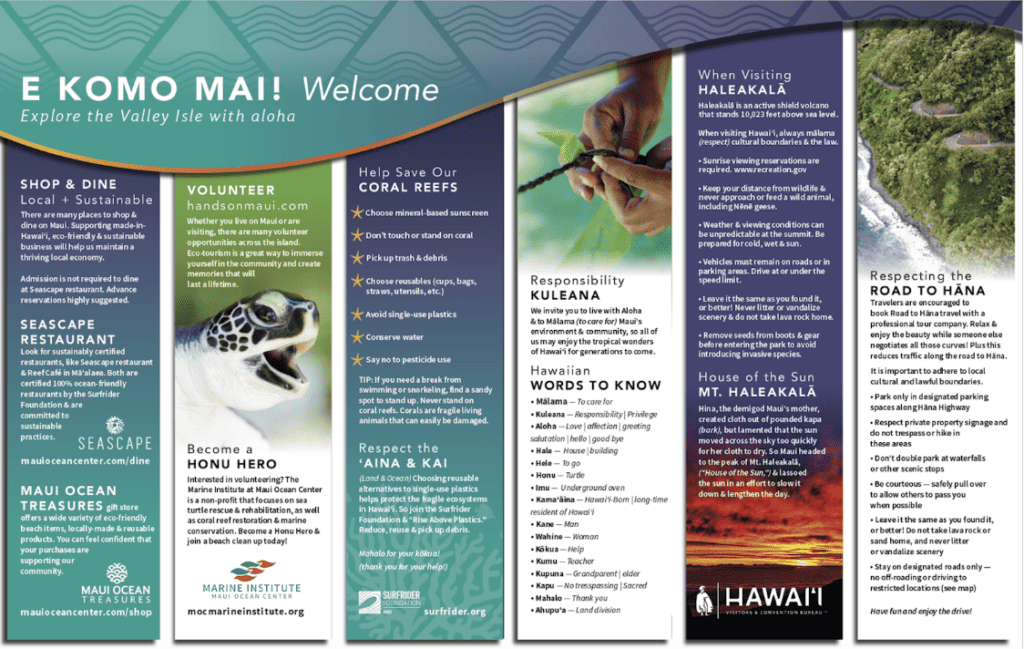
Maui’s spellbinding coastline offers a treasure trove of beaches, each holding unique charms to satisfy your tropical fantasies. From the dramatic waves of Big Beach to the serene cove of Maluaka Beach teeming with turtles, this island paradise caters to every beach lover’s desire.
Whether you seek adventure, relaxation, or a glimpse into Hawaii’s cultural heritage, Maui’s beaches have something for you. Remember, respecting the natural environment and local traditions is paramount in preserving the magic of these coastal gems. So, pack your beach essentials, embrace the Aloha spirit, and let the rhythm of the waves guide you to your perfect Maui escape.
When exploring Maui’s beaches it is important to mālama (respect) the environment, follow park regulations, and engage in sustainable practices to preserve the delicate ecosystem.
Immerse Yourself in our SEA-News featuring Hawaiʻi’s marine life, inspirational conservation, and glimpses behind-the-scenes.

